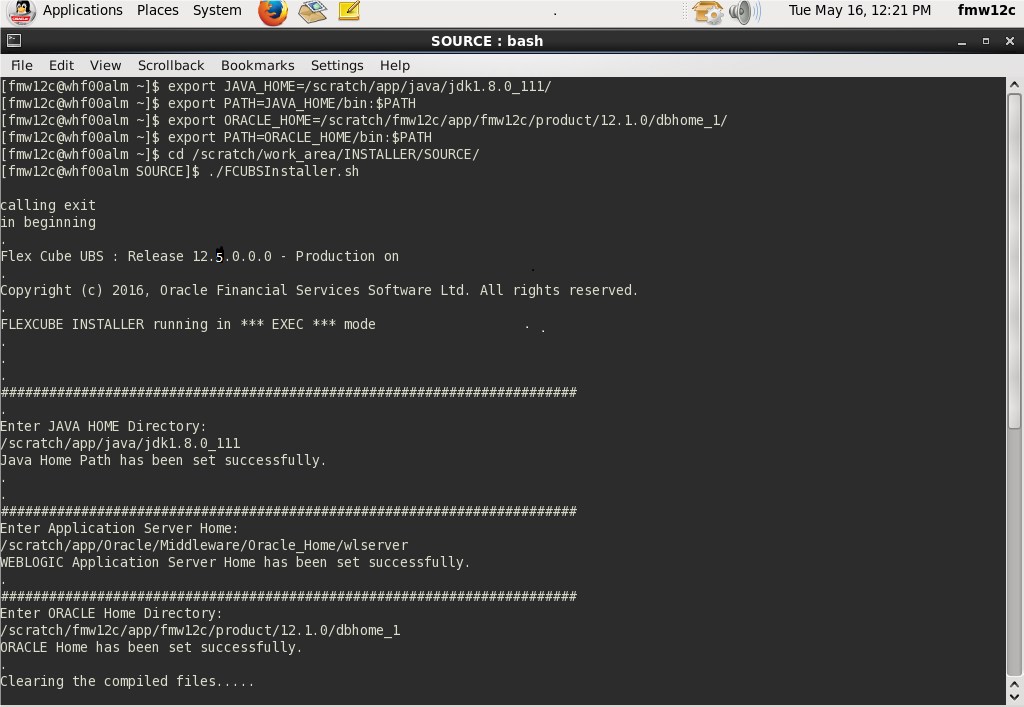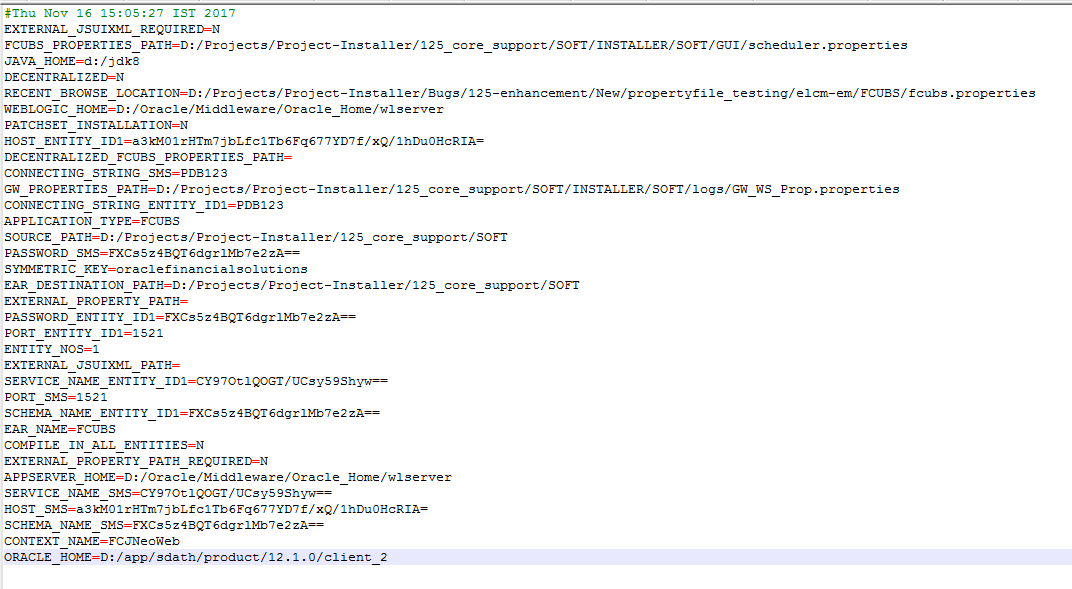1 Installer Prerequisite Setup
The overview of this document is to share you the knowledge on how installer is designed.
Two installer modes have to be used during setup of environment:
- GUI Installer
- Located under \INSTALLER\GUI
- GUI Installer is required for below activities:
- Property File Creation
- Basic Setup
- Environment Property file configuration
- Silent Installer
- Located under \INSTALLER\GUI
- Silent Installer will be required for below
activities:
- Database Setup
- EAR Building
- Following steps to set the variables:
- export JAVA_HOME=JAVA_HOME path
- export PATH=JAVA_HOME/bin:$PATH
- export ORACLE_HOME=ORACLE_HOME path
- export PATH=ORACLE_HOME/bin:$PATH
- Now traverse to the path where FCUBSInstaller.sh file is present in the server.
- Give access rights to the file and Run “./FCUBSInstaller.sh” file.
- Provide the necessary home path to set and launches the Installer.
- Run the “./FCUBSInstaller.sh” file in any graphical desktop sharing system like TigerVNC.
Source Structure :
The Installation can be done in different ways and Source Structure should be maintained as below:
The OBTF_OSDC.zip can be used without any modifications.Environment Setup Steps:
- Below are the sequence of steps to be followed during Environment Setup:
- Property File Creation: (Refer: OBTF_Installer_Property_File_Creation.pdf)
- Two property files are generated
- "fcubs.properties", i.e. required for application EAR building.
- "env.properties", i.e. common property required for environment setup.
- Two property files are generated
- Maintaining environment property file: (Refer next section)
- Database Setup: (Refer: OBTF_DB_Setup.pdf)
- Basic Setup: (Refer: OBTF_DB_Setup.pdf)
- Application EAR build: (Refer: OBTF_EAR_Building.pdf)
- Property File Creation: (Refer: OBTF_Installer_Property_File_Creation.pdf)
Figure 1-1 Environment Property File Configuration
Note:
A single property file is used for both DB Compilation and EAR build. Hence all the properties are located in a single property file. Some properties may not be applicable during a certain setup and those should not be modified (should be left with default values).| FOR LINUX | FOR WINDOWS | PRODUCT USED |
|---|---|---|
| SMSDBCompileRun.sh | SMSDBCompileRun.bat | SMS DB |
| TFEarRun.sh | TFEarRun.bat | TRADE FINANCE MANAGEMENT |
| TFDBCompileRun.sh | TFDBCompileRun.bat | TRADE FINANCE DB |
| TFGatewayEarRun.sh | TFGatewayEarRun.bat | TRADE FINANCE GATEWAYS (SOAP) |
| TFGatewayRestEarRun.sh | TFGatewayRestEarRun.bat | TRADE FINANCE GATEWAY (REST) |

